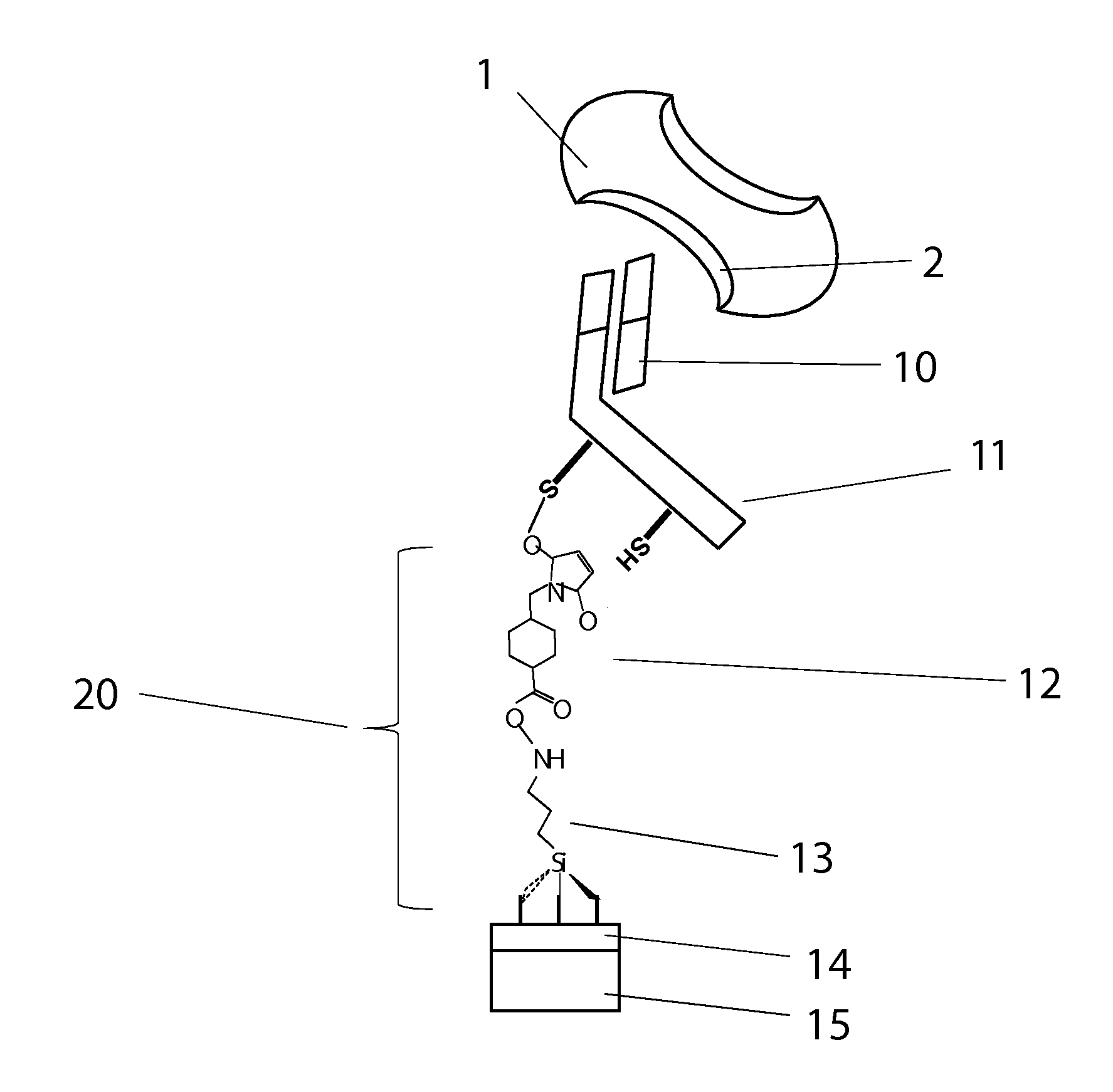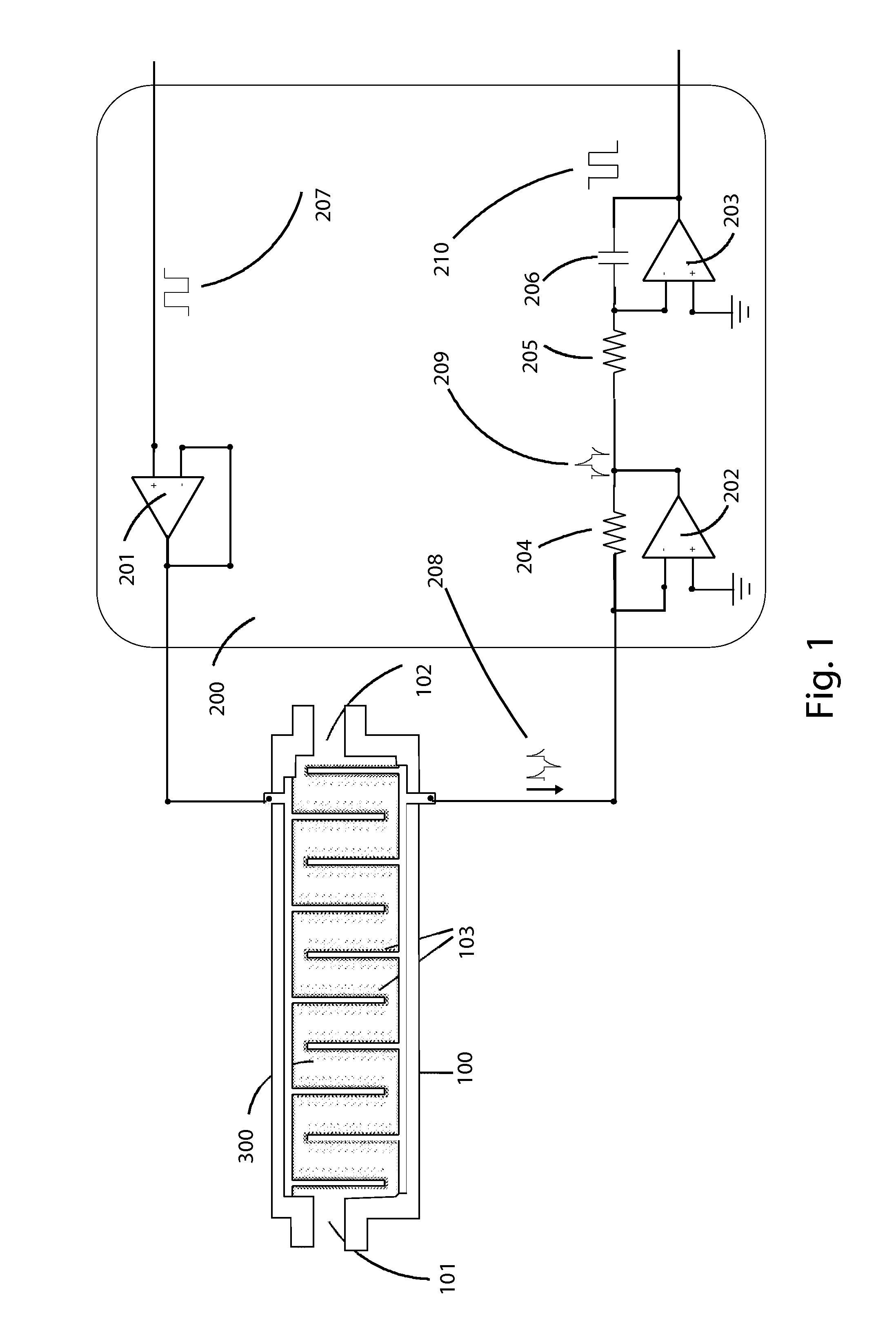Method and apparatus for detecting and regulating vascular endothelial growth factor (VEGF) by forming a homeostatic loop employing a half-antibody biosensor
a technology of vascular endothelial growth factor and homeostatic loop, which is applied in the field of chemical biosensors, can solve the problems of inability to conduct such studies, inability to detect tumor growth stasis or regression, and inability to readily obtain vegf transduction
- Summary
- Abstract
- Description
- Claims
- Application Information
AI Technical Summary
Benefits of technology
Problems solved by technology
Method used
Image
Examples
Embodiment Construction
[0079]FIG. 1 is an orthographic cross sectional view of the apparatus with a schematic representation of the electronic detection module. The biosensor with its insulating enclosure 100. The enclosure 100, is configured with fluid flow inlet 101, and a flow outlet 102. The apparatus 100 includes an array of electrodes coated with VEGF sensing elements which form the capacitive plates 103, which are interfaced with the electronic module 200, and forms the VEGF capacitance detector circuit. The VEGF capacitance detector circuit is connected to an operational amplifier (OpAmp) buffer 201, and a current-to-voltage amplifier 202 followed by an OpAmp integration circuit 203, including biasing resistors 204, 205, and capacitor 206. The input voltage Vin 207, and current output 1209, with V1209 represent the respective potential after hybridization and the resulting integral value of the capacitive change in the circuit 200. The electrodes are designed as an interdigitated pattern in order ...
PUM
| Property | Measurement | Unit |
|---|---|---|
| v/v | aaaaa | aaaaa |
| pressure | aaaaa | aaaaa |
| pH | aaaaa | aaaaa |
Abstract
Description
Claims
Application Information
 Login to View More
Login to View More - R&D
- Intellectual Property
- Life Sciences
- Materials
- Tech Scout
- Unparalleled Data Quality
- Higher Quality Content
- 60% Fewer Hallucinations
Browse by: Latest US Patents, China's latest patents, Technical Efficacy Thesaurus, Application Domain, Technology Topic, Popular Technical Reports.
© 2025 PatSnap. All rights reserved.Legal|Privacy policy|Modern Slavery Act Transparency Statement|Sitemap|About US| Contact US: help@patsnap.com



